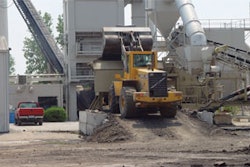It’s no secret that liability and workers’ compensation insurance costs are going up, with the construction industry getting hit particularly hard over the last few years.
A number of factors, including more insurance claims, rising fear of lawsuits, huge losses from the 9/11 terrorist attacks and a weak stock market have all led to rapidly increasing premiums.
In a recent survey of Concrete Concepts readers, nearly 65 percent reported that their insurance premiums have increased by more than 25 percent over the last year. About 30 percent have seen increases of more than 50 percent.
“There’s an increased sensitivity to hidden defects in buildings, especially in residential,” says Don Marks, president of Form Works, Inc., a Fort Lauderdale, Fla.--based commercial concrete contractor. “Some of the insurance companies are just refusing to cover construction companies anymore, and those that will cover it are making it very expensive.”
Besides facing the challenge of insuring his own 250--employee company, Marks is also the chairman of the American Society of Concrete Contractors’ Insurance Committee.
“Contractors are finding it particularly challenging to get traditional insurance,” Marks says. “They have to find alternatives or in many cases go without insurance.”
Lowering your costs
There are several factors causing the insurance crisis.
While contractors can’t change these underlying causes of the rising costs of insurance, there are things you can do to improve your company’s situation.
While there are several components to the formula that insurance companies use to set an individual contractor’s premiums, one of the most important is a company’s history of claims –- how often and how much has your insurer had to pay out.
“Establishing a superior safety and quality assurance program is a contractor’s best approach to reducing claims,” says Jeffrey Segall, vice president of construction for CNA, an insurer whose program is endorsed by the ASCC. “The absence of such a program may make the contractor undesirable, and they might not have the chance to ever see the best and lowest prices.”
Marks recommends having somebody assigned to watch over all insurance claims.
“We have somebody in--house who does that, but there are brokerages that now offer those services, which would be a good option for smaller contractors,” he says. “This can make an enormous difference. Insurance companies don’t always do a good job of keeping you informed, so you need to do it yourself if you really want to manage your claims.”
Doing things like offering safety training and carefully tracking jobsite implementation are important in giving a company more insurance options.
“It opens up more possibilities if they have a good record, and there will be more companies willing to cover them,” Marks says.
Reducing workers’ compensation costs can sometimes be as simple as keeping good records, Segall says.
“A common error is placing the payroll into the wrong classifications,” he says. “Contractors are fortunate in that they represent the only industry group where payroll of a single individual may be eligible to be split between a number of different classifications as long as the contractor can provide and maintain accurate documentation.”
In other words, if an employee spends part of his time in a less dangerous job, you can pay less for his workers’ compensation insurance. Many states also have laws that allow credits for various company programs, such as implementing a drug--free workplace, that can save contractors money on workers’ compensation costs, Segall says.
Self-insurance
Another possibility for companies is self--insurance, which is the route Marks has taken Form Works.
“We’ve been doing things this way for a few years because it gives us more control,” Marks says. “It also helps us with cash-flow because we pay for costs after they are incurred. Unlike a plan where we are billed, the money stays in our pocket, which is important because a company like ours could easily have premiums as high as $2 million.”
Rules for self--insurance vary from state to state, but usually a company has to receive a special exemption from the state and show that they have substantial reserves to cover a large claim. Typically, self--insurance works better for a large company, like Form Works, that is paying substantial premiums. An alternative for smaller contractors is to group together with several companies to manage costs. Some members of ASCC have formed a group for managing insurance costs for residential contractors, and many local and state chapters of other contractor trade associations are also banding together to form self--insurance groups.
What the future holds
It’s impossible to predict the future of insurance premiums because there are so many variables, Segall says.
“The state in which the work is performed, changes in legislation, substantial claim activity, the amount of capacity the insurance community has available and individual risk factors all factor into a possible answer,” he says.
However, an easing in insurance costs is unlikely in the near future as long as costs continue to rise. In general, if the economy improves, that should mean some relief as insurance companies recoup investment losses.
While medical costs don’t appear likely to slow their climb anytime soon, some potential legislation could help rein in litigation costs. For several years, Republicans in Congress have talked about capping awards for lawsuits. Many observers believe that the seats they captured in the Senate last fall could give them the majority they need to achieve that this year.
On the local level, about half the states now have right-to-repair laws that allow contractors to inspect and repair alleged construction defects before a client can sue. It is under consideration in many more states. Often this legislation also limits liability and the amount of time owners have to bring a suit.
Finally, contractor trade associations like the National Association of Home Builders are working to pass local legislation that would urge the use of alternative dispute resolution techniques such as arbitration and mediation in order to avoid going to court.
















